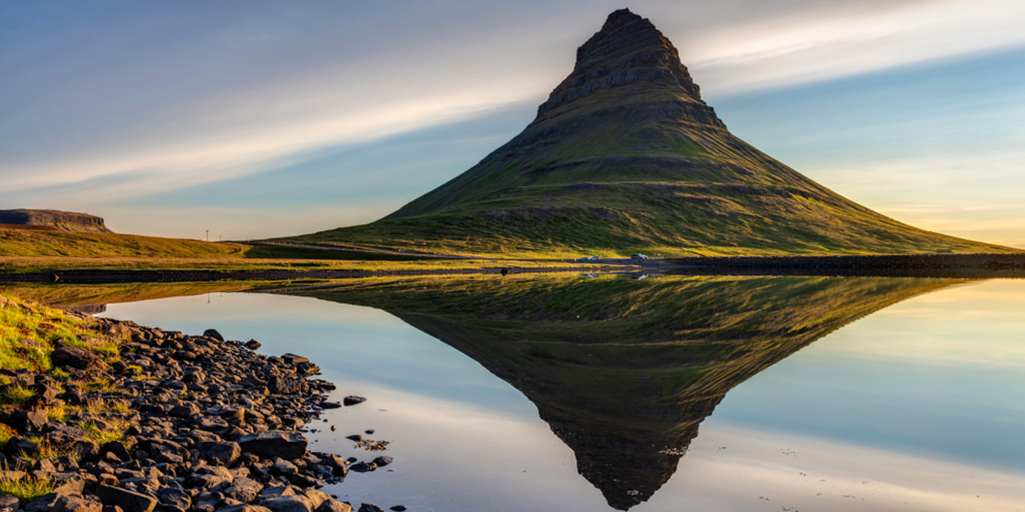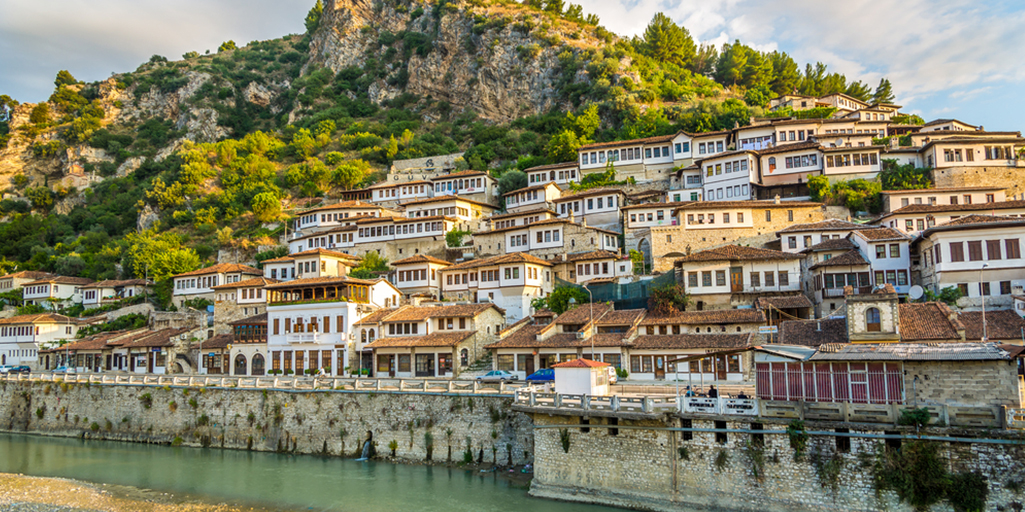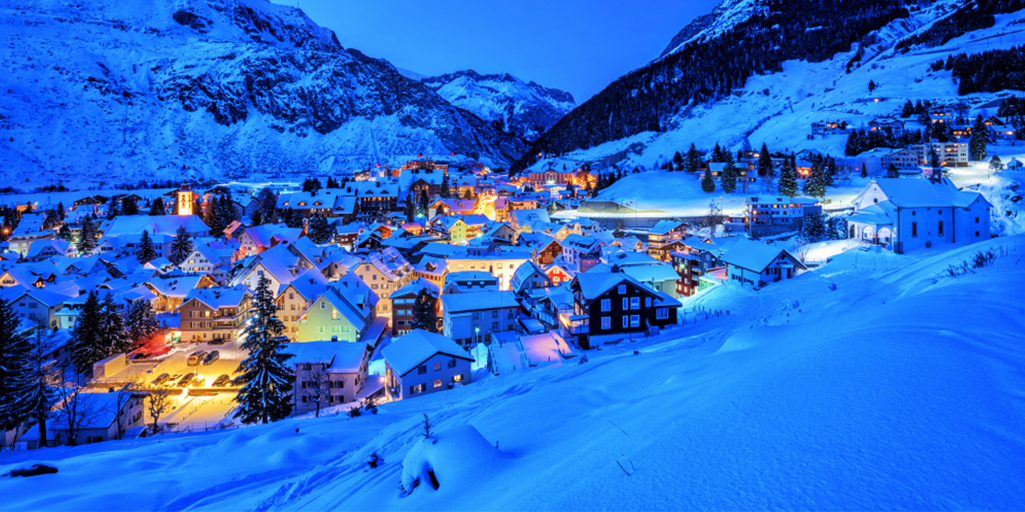“On the road again. I can’t wait to get back on the road. The life I love is making music with my friends and I can’t wait to get back on the road… On the road again. Going to places where I’ve never been, seeing things I may never see again and I can’t wait to get back on the road,” Willie Nelson sang in that masterpiece titled On the road again .
Let’s start the car, put on some good music and enjoy driving. How about letting ourselves be carried away by beautiful and almost unknown places in the old continent? The time has come for inspiring tourism on wheels, as reflected in the Lonely Planet book Epic Road Trips of Europe . A journey of nomadic creators from north to south and from east to west… Let the journey begin.

Keeping an eye on the north: memorable landscapes in the west of Iceland
Let’s start with the first roadmap, through the legendary west of Iceland, departing from Reykjavík and arriving in Stykkishólmur. A 200-kilometer journey packed with legends of Vikings, explorers, trolls, wizards and even monsters.
Writer and photographer Alexander Howard recounts that, leaving the capital behind, the outskirts “give way to stony fields framed by mountains in the distance.” Then, the road narrows, “flanked by pastures” and the road north borders “fjords and bays”, as we enter the Hvalfjordur tunnel. The first stop is Borgarnes, where its great ethnographic museum —Settlement Center— explains the discovery of Iceland. Continue driving to Arnarstapi, a small fishing village on the cliffs and the scene of a very popular saga there about a half-human being that guards the region.
The path continues along the edges of the Snaefellsnes peninsula, whose lava fields and volcanic cones were a source of inspiration for Jules Verne’s Journey to the Center of the Earth (1864). The adventure now takes us through Hellinssandur and the landscape reveals Kirkjufell, the arrow-like peak made famous by Game of Thrones. The finish line looms in Grundarfjördur, an enclave wedged between mountains and water, before the Berserkjahraun lava field and the perfect finish at Stykkishólmur, “a fishing village on a spur north of the peninsula,” says Alexander Howard. Who knows? There are still those who may follow in his footsteps, grateful for this visual spectacle.

Through the south of Europe: there is more to Albania than you might imagine
The writer Oliver Smith talks about how the Adriatic coast is a magnet for tourism. But it’s not usually because of Albania, perhaps the great forgotten country in this area. So he proposes a semi-unknown 580-kilometer route from Butrint to Theth, i.e. from the border with Greece to the north, from end to end, with the sea at our side.
So we start the engine “in the shade of oak and ash trees” with “stones placed here centuries ago by Greek, Roman and Byzantine masons,” he says. And we go up the map where the asphalt becomes abrupt and sinuous between the cliffs. It is important to mention that you must be very careful behind the wheel, because the road safety index in Albania is one of the worst on the continent. It is not a comfortable trip, of course, but all the views are impressive. “Whoever dares to take their eyes off the road,” comments Oliver Smith, “will see ruined castles dotting the hills, Orthodox monasteries watching the tides, ethnic Greek villages like Himara, and an exciting and mysterious Cold War nuclear bunker.”
The constant zigzag leads to the Riviera and then, between valleys, to Berat, an iconic Albanian city that “seems to be closer to the Bosphorus than to the Adriatic.” And then, if we start again in the direction of Tirana, the capital, the itinerary takes a break on the motorway. Let’s enjoy the crossroads of cultures – with a stop in Kruja – and the views of Lake Shkodra, before resuming our journey. “Shkodra would be a perfect culmination to a route through Albania if it weren’t for the tempting Accursed Mountains,” confesses Oliver Smith. These are the highest peaks of the Balkan peninsula, the final stretch to Theth, which is not for the faint of heart: “Many travelers visit the mountains by bus because the road from Shkodra to the mountain village of Theth is scary and twisty. He who feels at peace with his maker (and with his insurance company) can go in his own car, soaring over shady forests and above eagles.”
Hadn’t we promised unusual and inspiring paths through Europe?
Eastern Europe: heading for Route 59 in Slovakia
“Route 59 (the E77) begins with a UFO and ends in a vampire’s lair. It is not your classic itinerary, but this is Slovakia,” writes Anita Isalska in Lonely Planet. We are about to embark on the 90-kilometer journey from Banská Bystrica to Orava Castle. A region, she notes, that is certainly “rewarding to explore by car.”
From the starting point, at the SNP Museum, which focuses on the country’s history, we move towards the mountains, crossing two splendid national parks: Vel’Ká Fatra, to the west, with its bubbling springs, and Nizke Tatry, to the west, with its beech and maple trees. Yes, perhaps the vehicle’s engine will complain a bit when ascending to Vlkolinec, a fairytale village with wooden figures that represent rural life among colorful houses. Secrets of Slovak Route 59, which dances between hills and oaks through Ružomberok and Dolný Kubín. An unforgettable drive that ends, according to this adventure by Anita Isalska, at Orava Castle, located in Oravský Podzámok and whose Gothic towers rise above the asphalt on a cliff as leafy as it is rocky. The location where part of Nosferatu (1922), Murnau’s masterpiece of expressionist cinema, was filmed. We couldn’t ask for a better ending.

Western Europe and the cinematic port of Furka in Switzerland
This journey begins in Fiesch and ends in Andermatt. There are 62 hectic kilometers through Switzerland, in pure James Bond style, by the cinematic Furka pass, 2,453 meters above sea level. Here in these parts, author Craig McLachlan recalls, “Sean Connery in 007 mode and his Aston Martin DB5 sped across this truly epic port.” An alpine route of unlikely curves with unforgettable precipices on both sides. So from Fiesch the path advances to Oberwald, “the western portal for the automobile train that crosses the 15.4-km tunnel at the foot of the Furka”, explains the illustrious guide of this adventure, one of many in the book Epic Road Trips of Europe. There the road rises to Furkastrasse and the valley narrows as it crosses the Rhône towards the village of Gletsch, almost 2,000 meters above sea level. “400 years ago the Rhône Glacier used to go down to Gletsch, but in the last few centuries it has receded 2.5 kilometers and today you can only see a little bit of ice from the vantage point,” describes Craig McLachlan. At this point —and with great caution— the horseshoe-shaped turns of the asphalt lead to the top as long as the snow allows it. Then, after a descending zigzag that invites you to review the car’s maintenance in detail, we cross Tiefenbach and Andermatt; our destination waits impatiently after having crossed the so-called “James Bond-Strasse”. Because the film, like the show, must always go on and the postcard landscapes will have been worth the effort and concentration of the brave and intrepid driver that makes his or her way through the Swiss landscape.
In short, these routes are just some suggestions to the north, south, east and west of Europe. “On the road again,” Willie Nelson sang… “Going places I’ve never been, seeing things I may never see again and I can’t wait to get back on the road.”